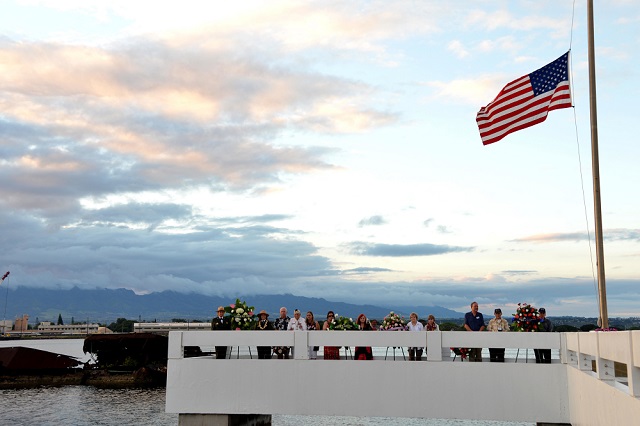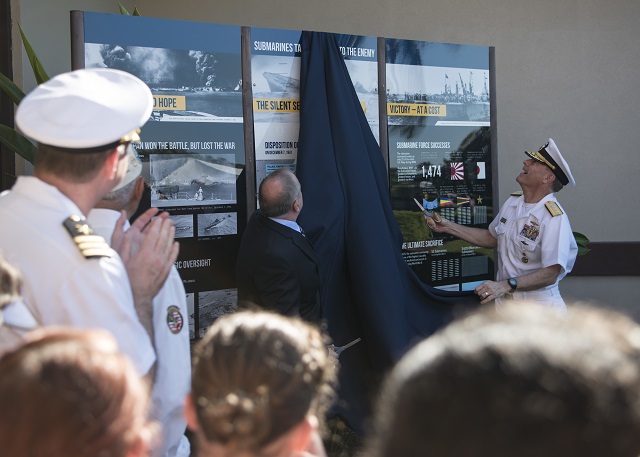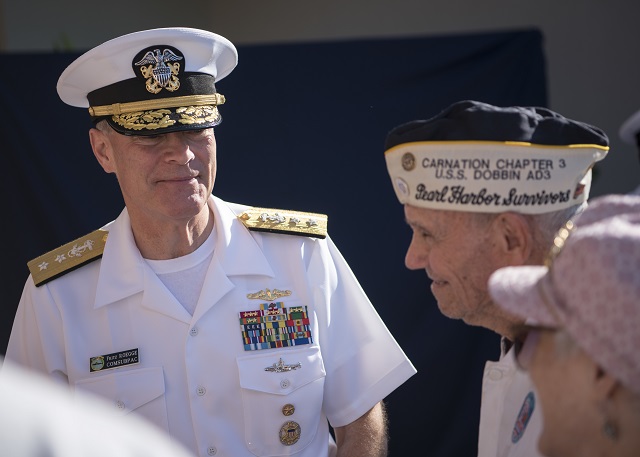Pearl Harbor and the Blackened Canteen
The annual Blackened Canteen ceremony is held each year as part of the U.S. Navy’s remembrance of the Pearl Harbor attacks.
The ceremony’s origins began in 1945 when, in the skies over Shizuoka, Japan, two U.S. Army Air Force B-29s from 314th Bomb Wing collided during a planned bombing raid, killing all 23 American crewmen on board.
Down below, more than 2,000 Shizuoka citizens also perished in the raid. From this tragedy emerged the tradition of the Blackened Canteen, an artifact recovered from the wreckage site the next morning by Fukumatsu Itoh, a Shizuoka citizen who survived the raid. Dr Hiroya Sugano, a child at the time of the raid, was also out that day observing the wreckage site with his family. The sense of grief was practically tangible, Sugano recalled.
The canteen, scarred and bruised, though still intact, bore the handprint of what Itoh imagined was the canteen's owner. As per his devotion to Buddhism, Itoh coordinated a proper burial for the American crewman alongside Shizuoka residents who also lost their lives that day. This began a tradition of honor that echoes to this day via the annual Blackened Canteen ceremony, held around the anniversary of the Pearl Harbor attacks.
Initially, every year, Itoh would visit the B-29 crash site to honor both the American crewman and the citizens of Shizouka with the pouring of bourbon whiskey from the canteen onto the ground. According to Itoh, this honored the spirits of the fallen. Over time he weathered criticism and outright scorn for his actions from his countrymen, but Itoh would not be deterred from his yearly homage to the fallen. To Itoh, this was part of the forgiveness and healing process.
In time, Sugano would take over this tradition from Itoh. In 1991, he started a yearly journey to Pearl Harbor, to visit the USS Arizona Memorial and expanded upon Itoh's tradition by pouring whiskey from the canteen into the waters surrounding the memorial.
Together, the tradition set forth by Itoh and Sugano helped parallel the peaceful relationship between the U.S. and Japan that has continued since the war.
In 2016, for the 75th anniversary of the Pearl Harbor attacks, the 6th annual Blackened Canteen ceremony at the USS Arizona Memorial saw the tradition's most impressive turnout yet.
"War is tragic, and it brings out the worst in us," said Jacqueline Ashwell, superintendent of the National Park Service's World War II Valor in the Pacific National Monument and guest speaker at the event. "Yet out of war, glimmers of hope can be found amidst the destruction and despair, and great acts of courage can be known. We are here to honor those who died on that fateful day in 1945, but also everyone who died during World War II. It's through this ceremony that we can extend peace and hope into the future."
Sugano spoke with a hushed reverence: "I cannot begin to express my gratitude for all of you waking up early to join us here today," said Sugano. "It was Mr Itoh's wish to see the people of Japan and the United States together as one, honoring his message of peace. Today, I can see that here before me."
USS Utah
As part of U.S. Navy commemorative events, Pearl Harbor survivors, World War II veterans and guests, also gathered at the USS Utah Memorial on Ford Island, Joint Base Pearl Harbor-Hickam, for a sunset tribute on December 6.
The hour-long ceremony is held at sunset each year to commemorate the anniversary of those who bravely served on the Florida-class battle ship, and to honor the 54 crew members still entombed onboard the sunken vessel.
The Utah was struck by multiple Japanese torpedoes and quickly capsized. The partially submerged hull of the fallen vessel, with the remains of many of her crew members, still lies in Pearl Harbor.
Submarine Exhibit
Rear Admiral Frederick "Fritz" J. Roegge in partnership with Chuck Merkel, executive director of the USS Bowfin Submarine Museum and Park, unveiled a new submarine exhibit in honor of the 75th commemoration of the attack on Pearl Harbor at the venue on December 6.
Roegge, Commander, Submarine Force, U.S. Pacific Fleet, said: "Within hours of the attack, Chief of Naval Operations Admiral Harold Stark ordered, 'Execute against Japan unrestricted air and submarine warfare.' Our submarines were the only forces able to immediately begin war patrols. They carried the battle across the Pacific and into Imperial Japanese home waters while the fleet was repaired."
While the submarine forces made up only two percent of the Navy, they sank 30 percent of all Japanese warships and 55 percent of all Japanese merchant ships sunk during the war.
"Submariners also paid the heavy price of the greatest casualty rate of any American branch of service in the war," Roegge said. "Submariners are well-aware that the challenges of World War II produced some of our greatest successes, our greatest heroes and our greatest sacrifices."

.JPG)


